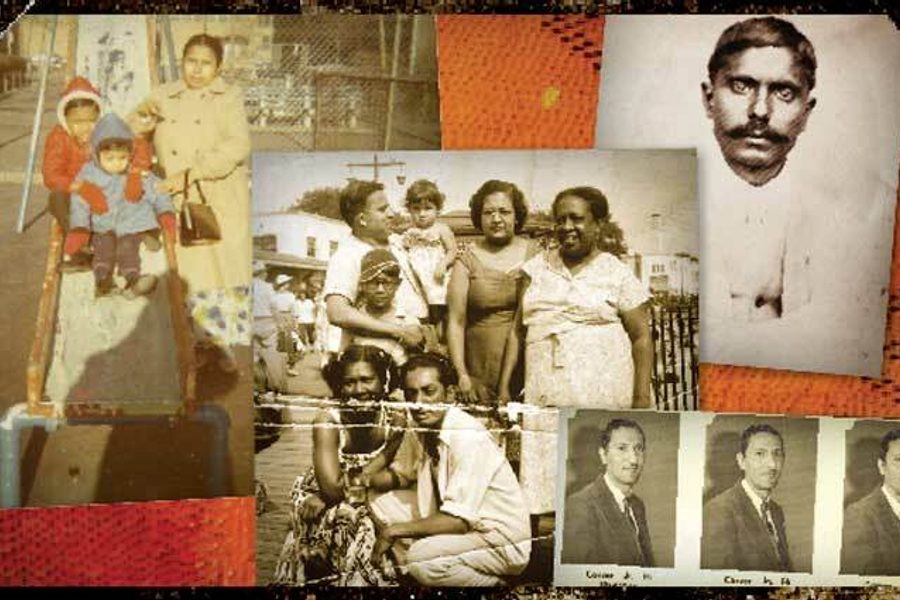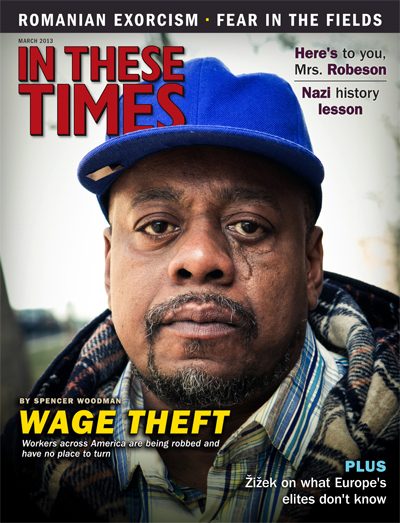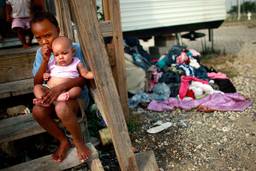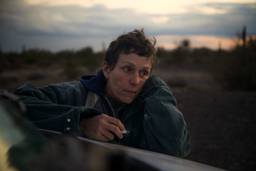
The federal census taker comes every 10 years and, for most people in the United States, this has little consequence. But not where I lived, in New Orleans, just outside the historic district of Tremé. There, people talked to each other about whether to lie to the census taker and which lie to tell, and that conversation produced stories about who had disappeared from us and who had stayed, and what was more important: loyalty or money.
That was the mentality in Creole New Orleans from as far back as I can remember—that is, the 1950s—until recently. The lying, the disappearing, the money and lack of it had everything to do with race.
We were part of a mixed-race community of immigrants and Louisiana natives, and there was no place for us in the data tables of the census or in the mind of a black-and-white America. And yet we existed, for generations. Now, in a thoroughly researched new book, Bengali Harlem and the Lost Histories of South Asian America, Vivek Bald traces one vein of our lineage, from a most distant country.
Bald follows Muslim peddlers and, later, ship workers who journeyed from India to the United States at the turn of the 20th century. As local Indian markets for fabrics lost value in the 1880s, Muslim Bengali men began traveling abroad to find customers for “Oriental” wares—silk and cotton, handkerchiefs, bedspreads and tablecloths, and rugs. They found an eager appetite in the United States, where styles from the East were becoming fashionable, furnishing sitting rooms across the nation, from the homes of Northern socialites to New Orleans’ bordellos. Later, in the northeastern United States, Bengali mechanics arrived, often by jumping ship to escape the terrible working conditions in the furnace rooms of British steamers.
All of these men, too dark and foreign to be accepted in the white parts of town, entered segregated communities of color in New York, such as the Harlem of the book’s title, but also Detroit, New Orleans and, later, other large industrial U.S. cities. My grandfather, Shaik Mohamed Musa, a Bengali peddler who arrived in Tremé in 1896, was one of them.
Racially, the Bengalis confounded the official categories. On documents, they appeared as “white, colored, Negro, Indian and East Indian,” Bald notes. And after their intermarriages to local women of color, their descendants still operated in all of these categories. When I was growing up, people talked on front porches and at kitchen tables about light-skinned family members who “passed” for white and were never seen again. Other people “passed” by simply going across town each day to work in banks, stores and other places where jobs were unavailable to Negroes. Bald notes that some darker-skinned Indians escaped Negro segregation by wearing turbans and calling themselves “Turks” and “Hindoos” while selling their wares, before coming home to their black families.
But the Bengalis in the mixed-race community kept few written accounts of their lives. Bald’s evidence is their footprint in business—restaurants and shops—and their occupations listed in census tables, for example, as countermen, chauffeurs, porters, firemen and subway laborers.
My grandfather became a shopkeeper and lived the rest of his life in the black community of New Orleans. People from around the world melded easily into our location. In the 19th century, Tremé was home to one of the most powerful and liberal communities of free people of color in America, rooted not only in Africa but also Europe, the Caribbean and—I recently learned from a classmate—as far away as New Zealand.
My grandfather married a woman of French, Choctaw, African and possibly Mexican descent: a New Orleans Negro. They remained in Tremé until he died, just before the birth of their last child: my father.
But the neighborhood changed in that time. The year after my grandfather arrived, in 1897, New Orleans decided to locate its red light district, Storyville, on the edge of Tremé. As Bald explains, for the next 20 years, Storyville and, after it, the Iberville projects had the effect of decaying the area where many Bengali and black families had settled. And in the 1960s, the federal government erected an interstate highway down Claiborne Avenue, the heart of the black and Bengali business community, further eroding the ability to trace the settlers and their descendants.
Still, black Bengali descendants like my family in New Orleans clung to the oral histories of our immigrant ancestors who—whether by choice or common oppression—embraced the black community in eras of fierce white persecution. Our stories lacked, however, any details about Indian families abroad, the villages that peddlers left or the ways that they arrived in the United States. Bald reweaves this frayed context of lives and, on a larger scale, serves as testimony to the black community’s diversity.
To bring his story to the present, Bald interviewed Bengali descendants, such as the Ullah family in New York City. Some Bengalis who married Puerto Rican and African-American women continued to introduce their friends to similar partners, creating an extended network of family and friends. Holding to Muslim traditions, they socialized at community and religious celebrations, in particular Eid al-Fitr, the end of Ramadan. They prayed, feasted and reconnected.
There was so much that the census takers didn’t know about us, generation after generation, during legal segregation and so many years afterward. For my family in New Orleans, the question of race opened the floodgates of memory and bitterness, and our understanding of the wide reaches of oppression. This happened every time that a box about race had to be checked: job application, driver’s license, school entry forms.
If we were light-skinned enough to check “white” or visibly mixed and bold enough to check “other,” we knew we could get easy entry into whatever door was barred at the time. But if we dared to acknowledge our darkskinned ancestors—Bengalis, Africans and others—we knew that we were in for an uphill battle.
The mixed-race people I knew put our heads down, mentally crouched into fighting stance and summarized our histories with one designation: We checked Negro with pride, and also fury at the injustices of our homeland.
And we continually sought out information that documented our experience, which existed beyond the categories of black and white. There was little beyond primary records. Finally, in 2013, there is Bengali Harlem. And we are no longer talking only to one another.
Please consider supporting our work.

I hope you found this article important. Before you leave, I want to ask you to consider supporting our work with a donation. In These Times needs readers like you to help sustain our mission. We don’t depend on—or want—corporate advertising or deep-pocketed billionaires to fund our journalism. We’re supported by you, the reader, so we can focus on covering the issues that matter most to the progressive movement without fear or compromise.
Our work isn’t hidden behind a paywall because of people like you who support our journalism. We want to keep it that way. If you value the work we do and the movements we cover, please consider donating to In These Times.
Fatima Shaik is the author of five books set in Louisiana and a former reporter for the New Orleans Times-Picayune. Her most recent book is the short story collection What Went Missing and What Got Found (August 2015), a love letter to the entertaining, unpredictable and flawed characters who populated New Orleans before Hurricane Katrina.






